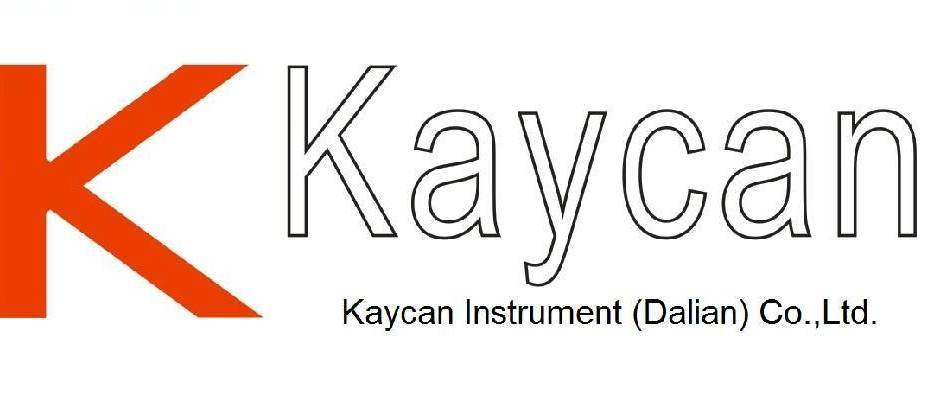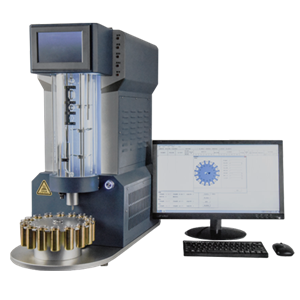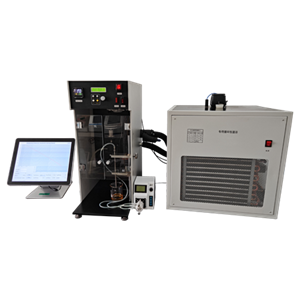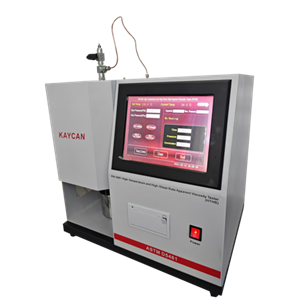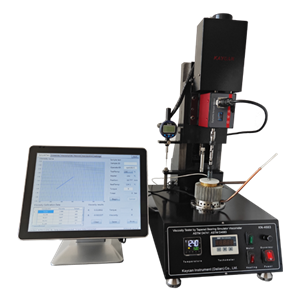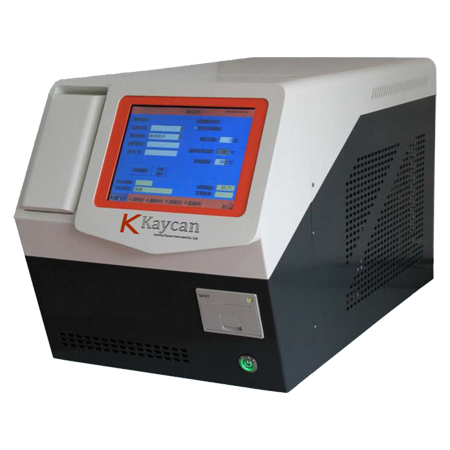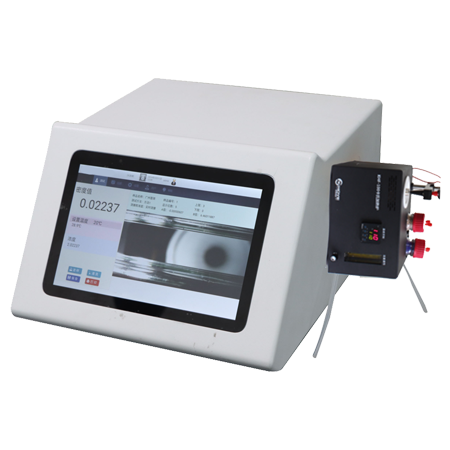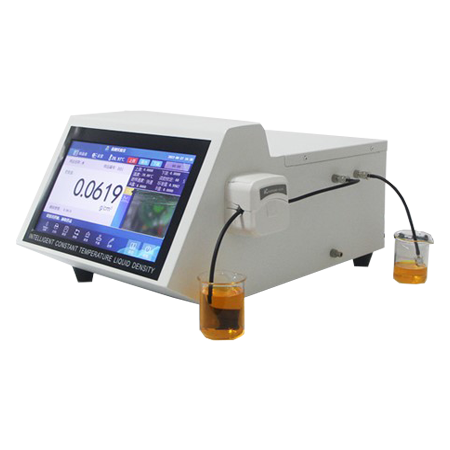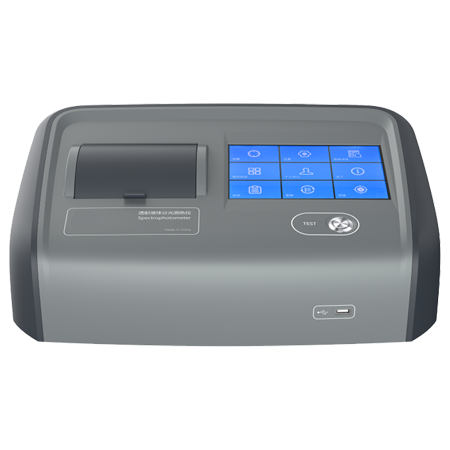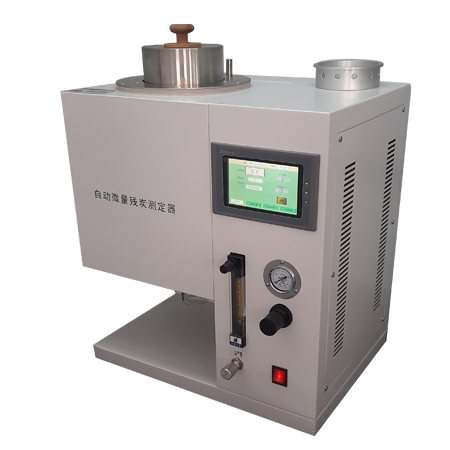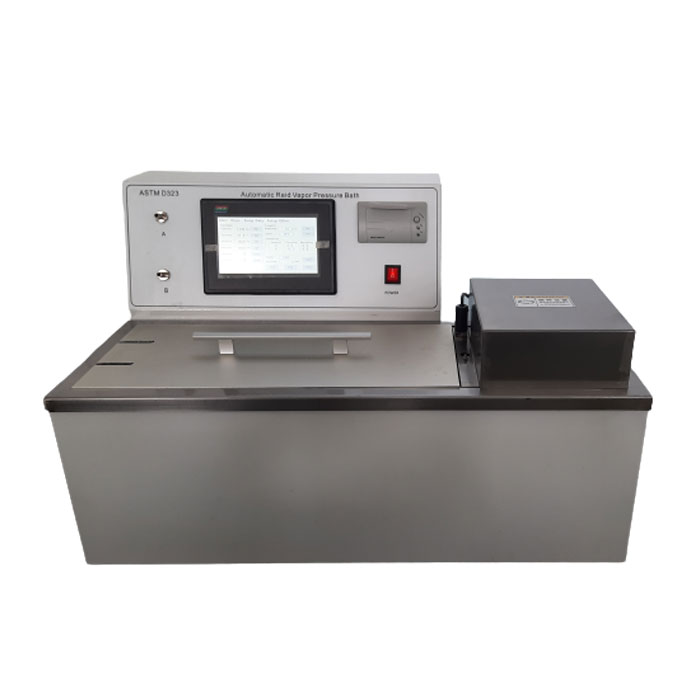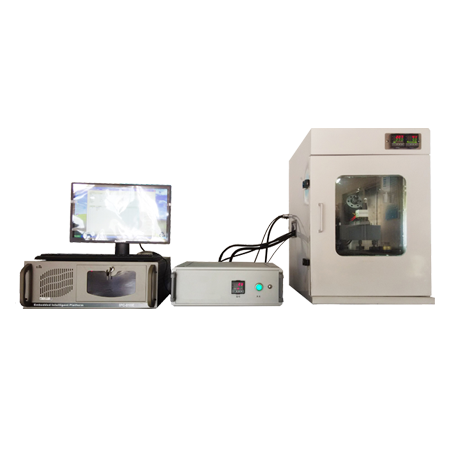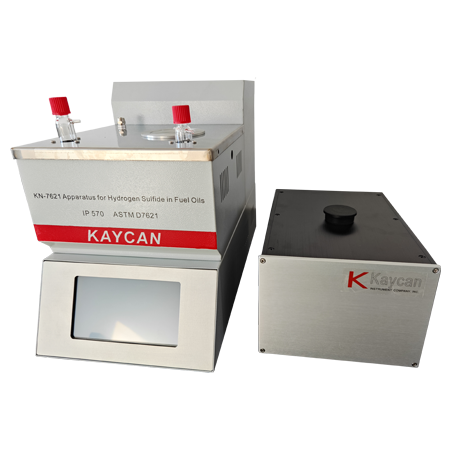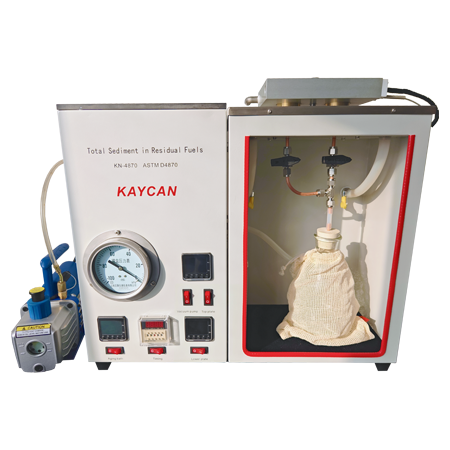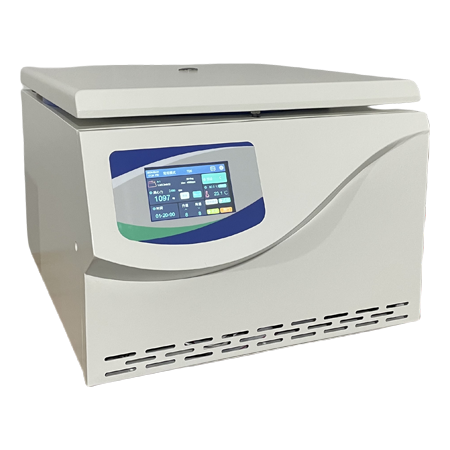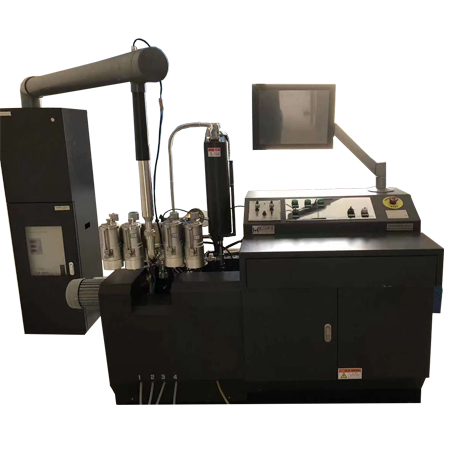-
ASTM D7153 Automatic Rapid Freezing Point Tester
KN-7153 Automatic Rapid Freezing Point Tester conforms to ASTM D7153 Standard Test Method for Freezing Point of Aviation Fuels (Automatic Laser Method). The freezing point of an aviation fuel is the lowest temperature at which the fuel remains free of solid hydrocarbon crystal which, if present in the fuel system of the aircraft, can restrict the flow of fuel through filters. The temperature of the fuel in the aircraft tank normally decreases during flight depending on aircraft speed, altitude, and flight duration. The freezing point of the fuel shall always be lower than the minimum operational fuel temperature.
Send Email Details -
ASTM D4052 Electronic Liquid Density Meter (with External Heater)
U-tube oscillating density meter, electronic liquid density meter is based on the principle of different oscillating frequency when the double U-tube is filled with different media. After pumping the sample into the resonance tube sensor, the measurement data is processed by the single chip microcomputer, it features fast , direct, and has high sensitivity. It consists of a dual tuning fork density sensor, vibrating tube circuit, temperature measuring circuit, CPU, display, constant temperature
Send Email Details -
ASTM D4052 Digital Density Meter U-tube oscillation method
U-tube oscillating density meter, electronic liquid density meter is based on the principle of different oscillating frequency when the double U-tube is filled with different media. After pumping the sample into the resonance tube sensor, the measurement data is processed by the single chip microcomputer, it features fast , direct, and has high sensitivity. It consists of a dual tuning fork density sensor, vibrating tube circuit, temperature measuring circuit, CPU, display, constant temperature
Send Email Details -
ASTM D6045 Colorimeter Of Petroleum Products
KN-6045 Colorimeter for Petroleum Products conforms to the ASTM D6045 Standard Test Method for Color of Petroleum Products by the Automatic Tristimulus Method. Determination of the color of petroleum products is used mainly for manufacturing control purposes and is an important quality characteristic because color is readily observed by the user of the product. In some cases, the color may serve as an indication of the degree of refinement of the material. When the color range of a particular product is known, a variation outside the established range may indicate possible contamination with another product. However, color is not always a reliable guide to product quality and should not be used indiscriminately in product specifications.
Send Email Details -
ASTM D4530 Micro Carbon Residue Apparatus
The carbon residue value of the various petroleum materials serves as an approximation of the tendency of the material to form carbonaceous type deposits under degradation conditions similar to those used in the test method, and can be useful as a guide in manufacture of certain stocks. However, care needs to be exercised in interpreting the results
Send Email Details -
ASTM D323 Automatic Reid Vapor Pressure Bath
Vapor pressure is an important physical property of volatile liquids. This tester is used to determine the vapor pressure at 37.8°C (100°F) of petroleum products and crude oils with initial boiling point above 0°C (32°F). Vapor pressure is critically important for both automotive and aviation gasolines, affecting starting, warm-up, and tendency to vapor lock with high operating temperatures or high altitudes. Maximum vapor pressure limits for gasoline are legally mandated in some areas as a measure of air pollution control.
Send Email Details -
ASTM D6079 Evaluating Lubricity Of Diesel Fuels By The HFRR
Diesel fuel injection equipment has some reliance on lubricating properties of the diesel fuel. Shortened life of engine components, such as diesel fuel injection pumps and injectors, has sometimes been ascribed to lack of lubricity in a diesel fuel
Send Email Details -
ASTM D5001 Ball-on-Cylinder Lubricity Evaluator (BOCLE)
KN-5001 Ball-on-Cylinder Lubricity Evaluator (BOCLE) conforms to ASTM D5001 Standard Test Method for Measurement of Lubricity of Aviation Turbine Fuels by the Ball-on-Cylinder Lubricity Evaluator (BOCLE) and ASTM D6078 Standard Test Method for Evaluating Lubricity of Diesel Fuels by the Scuffing Load Ball-on-Cylinder Lubricity Evaluator (SLBOCLE).. The fluid under test is placed in a test reservoir in which atmospheric air is maintained at 10% relative humidity. A non-rotating steel ball is held in a vertically mounted chuck and forced against the outside diameter of an axially mounted cylindrical steel ring with an applied load. The test ring is rotated at a fixed speed while being partially immersed in the fluid reservoir. This maintains the ring in a wet condition and continuously transports the test fluid to the ball/ring interface. The wear scar generated on the test ball is a measure of the lubricating property of the fluid.
Send Email Details -
Hot
ASTM D7621 Apparatus for Hydrogen Sulfide in Fuel Oils
KN-7621 Apparatus for Hydrogen Sulfide in Fuel Oils conforms to ASTM D7621 Standard Test Method for Determination of Hydrogen Sulfide in Fuel Oils by Rapid Liquid Phase Extraction. A weighed test specimen is introduced into a heated test vessel containing a diluent base oil. Air is bubbled through the oil to extract the H2S gas. The air with the extracted H2S is passed, via a vapor phase processor (Procedure A only), to an H2S specific electro-chemical detector enabling the H2S content of the air to be measured and the amount in the liquid phase to be calculated in mg/kg/ The filter cartridge is not required for procedure B.
Send Email Details -
ASTM D4870 Total Sediment In Residual Fuels
Appreciable amounts of sediment in a residual fuel oil can cause fouling of facilities for handling, and give problems in burner mechanisms. Sediment can accumulate in storage tanks, on filter screens, or on burner parts, resulting in obstruction of the flow of oil from the tank to the burner
Send Email Details -
ASTM D1796 Water And Sediment In Fuel Oils By The Centrifuge Method
The water and sediment content of fuel oil is significant because it can cause corrosion of equipment and problems in processing. A determination of water and sediment content is required to measure accurately net volumes of actual fuel oil in sales, taxation, exchanges, and custody transfers.
Send Email Details -
ASTM D2699, ASTM D2700 Apparatus for Octane and Cetane Number of Spark-Ignition Engine Fuel
KN-300R Apparatus for Octane and Cetane Number of Spark-Ignition Engine Fuel conforms to ASTM D2699 Standard Test Method for Research Octane Number of Spark-Ignition Engine Fuel and ASTM D2700 Standard Test Method for Motor Octane Number of Spark-Ignition Engine Fuel. It covers the quantitative determination of the knock rating of liquid spark-ignition engine fuel in terms of Research O.N., including fuels that contain up to 25% v/v of ethanol and the quantitative determination of the knock rating of liquid spark
Send Email Details
